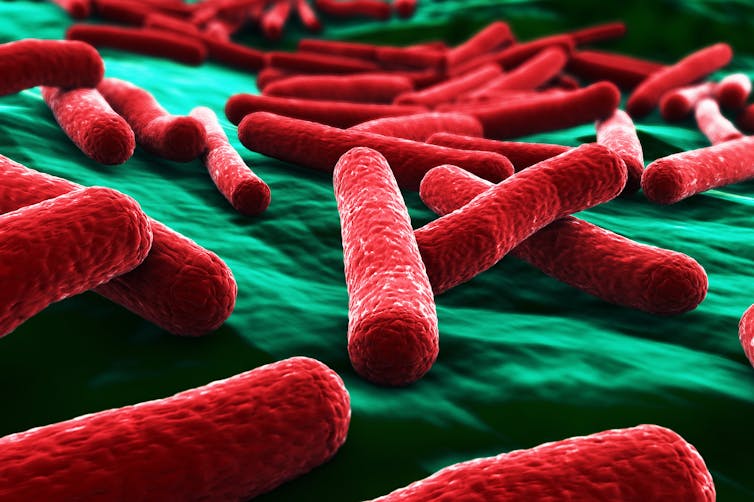Taylor in The Conversation: Why Are Some E. coli Deadly?


Wesleyan faculty frequently publish articles based on their scholarship in The Conversation US, a nonprofit news organization with the tagline, “Academic rigor, journalistic flair.” In a new article, Erika Taylor, associate professor of chemistry, explains why some E. coli live peacefully in our bodies while others make us very sick. Taylor also is associate professor of environmental studies, associate professor of integrative sciences.
Why are some E. coli deadly while others live peacefully within our bodies?
The sugars E. coli display vary from strain to strain. Some sugar coats are associated with strains living symbiotically in your stomach – E. coli HS, UTI89 and CFT073 are some of the most commonly found to be helpful. Others are associated with illness – like E. coli O104:H4, also called enterohemorrhagic E. coli (EHEC), which caused a major outbreak in Europe in 2011. According to the CDC, this latest outbreak is due to E. coli O157:H7 – a strain that’s caused at least one food-borne outbreak in the U.S. each year since 2006.
The letters and numbers that name a strain serve as a code for which sugars are present. While the sugars bacteria display aren’t what makes you sick, they’re quickly and easily detectable and help scientists and doctors differentiate whether a present strain will generate toxins that can make you ill.

Bacteria rely on what researchers term virulence factors: molecules that aid their survival while undermining your immune system. Both the EHEC and O157 strains of E. coli are able to make a virulence factor called a Shiga toxin. Shiga toxins were discovered first in Shigella dysenteriae, the bacterium that causes dysentery. Later researchers discovered that the EHEC and O157 strains of E. coli had gained the gene for Shiga toxins from the dysentery bacterium through a process called horizontal gene transfer.
When bacteria reach a critical mass in your body after you eat a contaminated food, they secrete these toxins as part of their strategy for finding a new host. The toxins enter the cells of your intestines, causing symptoms including low-grade fever, stomach cramps, diarrhea (often bloody) and vomiting.
It’s virulence factors like these that are to blame for human illnesses and that give E. coli a bad name – even if all strains don’t deserve it.
This article was originally published on The Conversation, and also appeared in Scientific American and Newsweek, among other news outlets. Read the original article.

